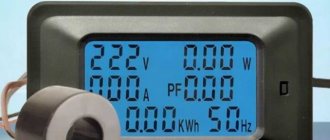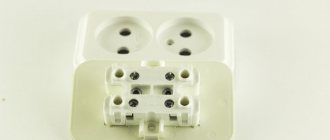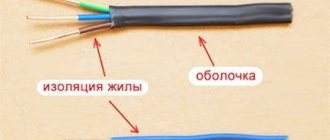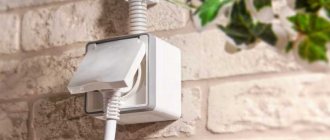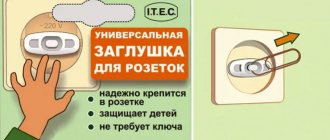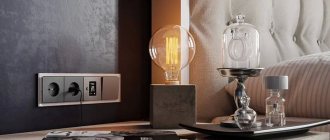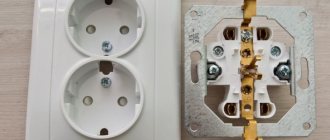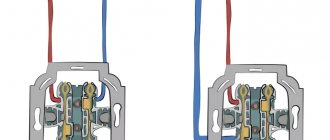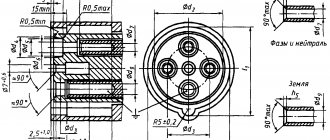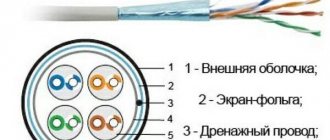The electrical fittings market now amazes with the abundance of electrical installation products that can work perfectly under specific operating conditions. Among such proposals are waterproof sockets. You should familiarize yourself with their advantages and features before purchasing. Do you agree?
We offer reliable information about the specifics of the design and operation of sockets for rooms with high and unstable humidity levels. Here you will learn how to select a device according to the degree of protection, how to read the product labeling. We will introduce you to the leading manufacturers in the segment.
A detailed description of sockets for operation in conditions of direct and indirect contact with water is supplemented with diagrams, a selection of photo illustrations, a video presentation and installation instructions.
Features of waterproof devices
As noted above, the electrical fittings market is represented by a wide range of socket products that meet almost all technical requirements and even protection from moisture and dust.
Such sockets have a special design: a durable housing, a protective valve-cover, an insulated terminal block, a contact group and necessarily grounding.
For the most part, waterproof sockets are not distinguished by a brilliant and unique design, but this does not stop them from being such necessary and safe “things” in the household
The cases and covers of such sockets are made of special polymer heavy-duty plastics that can withstand moisture and low temperatures. The terminal block can also be made of plastic or high-strength ceramic.
The contact group and grounding “petals” are made of alloyed steel and brass alloys, which allows for a reliable and safe connection of contacts with the plug connector of an electrical device.
This corrosion-resistant product is capable of operating in the most extreme weather conditions, with direct contact of drops and jets of water.
A typical moisture-resistant socket has a different form factor; in most cases, it includes a recess in the housing for the plug and a protective cover. The recess protects the socket from the lateral influence of water, and the cover protects from direct moisture entering the socket openings.
The moisture-proof socket cover is made of solid/transparent PVC plastic, rubber, silicone material. It is attached to the body of the product using springs, latches or the material itself in the case of a rubber cover
And yet, the housing and cover of the socket protect the terminal block from dust and other abrasive particles that can negatively affect the condition of the electrical contact between the power supply network and the electrical device.
To compare the degree of protection from moisture and dust relative to the shell of a certain product, the so-called parameter Ingress Protection (IP) is used.
Mounting housings
Before carrying out installation work, it is worth preparing free space. With frame kits, you need to secure the product using self-tapping screws or screw-type clamps.
The set of fasteners directly depends on the material from which the base for fastening the structure is made.
In the case of using a poured coating, it is possible to install an inexpensive plastic housing to a depth of about 8 cm or a galvanized kit with a immersion of 20-30 cm. The latter solution is suitable for industrial premises.
As an example, a galvanized kit is often used for output from special-purpose cable routes.
The greatest difficulties are associated with installing sockets in a concrete floor. The reasons are as follows:
- The installation niche will have to be knocked out, which requires considerable effort and time.
- During the work, you cannot do without an impact drill or hammer drill, with the help of which you can create the necessary mounting holes.
At the final stage of installation, the cover is attached using brackets and clamps.
Shell protection degree
Protection of the shell or housing of any device that contains electrical parts/elements is one of the main characteristics of the finished product in accordance with international standards IEC60529 (DIN40050, GOST 14254).
In any case, every household electrical appliance and industrial equipment must have a certain degree of enclosure protection, which is determined by the standardized 4-character IPXX code, where:
- IP stands for the very concept of equipment protection level;
- the first numeric character X sets the degree of protection against the penetration of dust and particles;
- the second numeric character X sets the degree of protection against penetration of moisture and water.
In addition, in the equipment marking there is another additional letter symbol, which indicates the degree of protection of a person from access to dangerous parts and parts of the same equipment. But it is not used for waterproof sockets.
The Enclosure Protection Level Labeling Chart is a practical guide for selecting an IP level. It is enough to determine what type of shell protection is needed (+)
For the first numeric character we have 7 levels of protection:
- 0—no protection;
- 1-4 - protection from large bodies (pieces of wire, parts of cable, insulation residues, nuts, washers, bolts) and organic particles (stones, earth, sand) with a diameter of over 1 mm;
- 5 - protection from dust, there is a possibility of particles entering the device, which does not interfere with its normal operation;
- 6 - protection from dust, particles do not penetrate inside the device.
For the second numeric symbol we have 9 levels of protection, but we are only interested in options from 3 to 6:
- 3 and 4 - protection against splashes and raindrops;
- 5 - protection from water jets, which does not interfere with its normal operation;
- 6 - protection from a strong water jet, which does not interfere with its normal operation.
For moisture-resistant sockets that are installed indoors, there are several typical enclosure ratings, such as IP44 or IP45.
For outdoor moisture-resistant open type sockets - IP54/55, but the most common and widely used are IP65/66 class markings, which are recommended to be purchased for external use.
Grooving a channel for wiring
The most difficult stage, because chipping is accompanied by dust and dirt. Professionals use a tool - a wall chaser, it makes 2 grooves at once, and it is possible to connect a vacuum cleaner. After the channel is ready, the socket box is drilled using a “crown”.
The second step must be completed with wet cleaning. Advice - it is recommended to trench a plastered wall, without tiling.
Using moisture-proof sockets
There are practically no questions about the use of ordinary sockets - we put them where they are needed.
But a waterproof socket is another matter - a special class of sockets that are used in special cases, namely:
- bathrooms and bathrooms of apartments (houses);
- cosmetology centers and fitness clubs, where water treatments, saunas, baths, steam rooms, showers are provided;
- swimming pools and entertainment centers such as dolphinariums, water parks, etc.;
- “street” use (on the outside of buildings) and at industrial facilities.
The bathroom of a classic apartment has long ceased to be an archaic room with only a washbasin and a cast-iron bathtub; now it is a high-tech room in which washing machines, hydromassages, Jacuzzis, boilers, electric hoods and dryers are installed.
Image gallery
Photo from
Location of sockets in the bathroom
Waterproof sockets in the kitchen
Power points in swimming pools and saunas
Use in open areas
Don’t forget about the need to have an outlet for a hair dryer, curling iron, electric razor and much more. The bathroom also needs such basic things as an electric hood and a hand dryer after washing. All this “good” must be powered from a reliable source - the electrical network through a waterproof outlet.
Today's beauty salons and sports and fitness clubs provide more than a wide range of cosmetic and health services, which include water treatments.
To safely provide such services, moisture-resistant sockets are used, into which an extensive list of electrical appliances and equipment is connected: from a dryer to a tubular electric heater (heating element) for “heating” the stones in the sauna.
The bathroom space has several danger zones due to the presence of an electrical appliance, so experts recommend installing sockets in zones 2 and 3
There is no need to talk about the need for moisture-resistant outlets in a swimming pool or water park. It is impossible to normally, and most importantly safely, turn on any water ring pump or other injection unit to ensure water circulation in the tank or the presence of the required water flow force on the attraction.
A huge amount of industrial equipment operates from the electrical network in the most extreme environmental weather conditions or with the presence of liquid inside the unit.
In order to eliminate the systematic or accidental negative impact of moisture on the electrical connection between the power supply and equipment, waterproof sockets with the maximum protection class of the shell are used everywhere.
I often install a waterproof socket next to an electric light switch, which must also have a similar class of protection against moisture and water.
Which wire to choose: material and design
Wiring in the bathroom is done using a three-core, double-insulated electrical cable. Each conductor has its own color marking, which makes switching easier:
- Blue (cyan) – “zero”;
- Brown – “phase”;
- Yellow-green – “earth”.
The purpose of the wire cores is determined by color
How to connect wire cores
When purchasing, preference should be given to copper cable. It has many advantages compared to aluminum:
- More flexible, it is more convenient to connect it to the contacts of sockets and switches;
- Less susceptible to oxidation at contact points;
- With the same cross-section, it can withstand a greater load;
- Provides less contact resistance when connected to outlets and circuit breakers.
Copper cables are characterized by different core designs. They can consist of either one thick or a bundle of thin twisted wires. In terms of their electrical characteristics (resistance, load capacity, insulation class), both types are almost identical.
The only downside to stranded copper is the need to solder the mounting ends. This is necessary to ensure a more reliable connection when connected to an outlet. A cable with single-wire conductors does not require such an operation, but it is more difficult to work with, since it is more rigid.
General safety rules
It is clear that for the safe use of household appliances and auxiliary equipment, you need to follow trivial safety rules when connecting or disconnecting an electrical appliance to an outlet.
For example, before plugging the plug into the socket, inspect the cavity of the socket connector and make sure that there are no foreign objects in the socket, and that there are no fumes and “dark” spots on the surface of the socket and near it on the surface of the wall where it is installed.
If obvious signs of “burning” are visible on the surface, you must immediately stop any attempts to connect the electrical device to the network and turn off the packager. Then replace the socket
Next, inspect the wire of the electrical appliance and the plug, check for the absence of exposed parts of the wire and darkening on the cable. If the above factors are detected, stop using this electrical appliance and call a specialist. Or check the fault yourself if you have the appropriate skills.
When disconnecting the plug from the socket, it is recommended to hold the surface of the outer panel of the socket with your free hand and smoothly pull the plug out of the socket. If you sharply “pull” the plug from the socket, you can “rip” the terminal block from the socket.
Do not try to put the socket back in place under any circumstances. First you need to turn off the electrical network at the distribution panel, then turn off the device, remove the external panel of the socket and only then return the terminal block to the socket of the socket
Everyone knows that water is an excellent substance for transmitting electrical charge, therefore it is necessary to avoid any contact of moisture with the conductive element of the network, which is the socket. Although the outlet itself is protected from moisture, this does not mean that electricity cannot affect human health.
If you find water near the outlet, we strongly recommend that you completely turn off the power supply in the entire room, for example, at the distribution brush, and call a specialist.
What it is?
Floor sockets are special products designed to connect equipment in the workplace. The installation of such devices allows you to optimize and secure connection points for electrical appliances in the interiors of houses, apartments or office premises.
Special hatches in the floor allow you to place connectors for a TV, telephone, computer and other equipment.
Sockets and hatches built into the floor are practical and easy to use. They have a modern appearance and easily fit into any interior.
In addition, they are ergonomic and fully meet safety requirements. But first things first.
Sockets for outdoor use
If you are the owner of a private house, a country estate, or an ordinary 6-acre plot of land with a trailer, then there is no need to talk about the variety of situations when you need a simple outlet “at hand.” In order to avoid purchasing 100-meter extension cords, it is rational to install the required number of sockets on the outside of any object.
Waterproof socket blocks can be installed almost anywhere: the wall of a building, on a wooden support for a gazebo, on the “deck” of a mini-pool, inside a stone/brick fence support, on the outside of a wall in a garage or other utility room.
Innovative technologies are penetrating everywhere, even such public places as parks, squares, and embankments are not lagging behind in this regard. Now there is no need to run home to charge your favorite device
These sockets can easily be used to connect virtually any electric tool or special equipment, which is more economical in terms of energy consumption compared to devices powered by gasoline and diesel engines.
For example, we plug into an outlet an electric saw, electric pruning shears, an electric barbecue and oven, a submersible pump and a pressure water/air compressor. Let's move on to passive relaxation - we can easily connect an external audio system, a television panel and much more to such sockets.
Regardless of the purpose of using the “street” outlet, we recommend adhering to some notes on the choice of location and method of mounting the electrical connector:
- It is advisable to install the socket under any ledge or visor;
- height from the ground surface at least 75-80 cm (taking into account the possible level of snow cover);
- the cable for the socket must be with protective grounding;
- connecting the wire to the socket exclusively from below - this will prevent draining water from getting inside the electrical equipment.
Protective membranes must be provided inside the socket, and the contact group must be made of bronze or some copper alloy. Such an “outdoor” moisture-resistant outlet is integrated into an individual package - this will protect the rest of the power supply network in the event of a malfunction.
Floor rose columns
The floor rosette column deserves special attention. It is a telescopic stand made of aluminum or plastic that rises from the floor and rests on the ceiling without requiring dowels. It can accommodate electrical installation devices of any European standards. Inside, the column is divided into 2 channels for separate conduction of power and low-current lines. Electrical communications are supplied to the device through floor channels or a suspended ceiling.
USEFUL INFORMATION: Retractable socket block: selection, pros and cons, installation and operation
The standard height of the rosette column is 1.5 m and 2.7 m with the possibility of increasing to 3.25 and 4.5 m.
A double-sided column is an ideal solution for offices and other premises where it is necessary to simultaneously connect a large amount of equipment. Each column can have up to 32 modules measuring 45 × 22.5 mm. In this case, sockets can be mounted on 1 or 2 sides.
A mini-column differs from a column in height. This stand rises above the floor to a height of 25 cm or 68.5 cm and is also equipped with a large number of sockets.
Conclusions and useful video on the topic
A worthy example of the correct selection and installation of a waterproof double socket with correct connection to a separate circuit breaker:
The following video is presented solely as an introduction to advanced technologies in the field of electrical wiring components:
Finished products from popular manufacturing companies LEGRAND, SCHNEIDER ELECTRIC and BERKER have excellent characteristics of strength, reliability and safety.
It is also possible to purchase fittings from the Swedish ABB and the German GIRA, but these companies cost a little more due to the use of rather expensive materials in the production of products, including bronze and gold-plated metals.
We are waiting for your stories about choosing sockets for installation in bathrooms and swimming pools. Please write in the block located below, under the text of the article. Here, ask questions and comment on the material offered for review.
Hidden installation
In this option, the main difficulty lies in preparing the landing nest. It is necessary to drill or gouge out a recess into which the socket block will be installed. A brick wall can easily be drilled with a diamond-coated crown. Reinforced concrete panels are very difficult; in addition, you have to use a hammer drill.
The socket box is installed in the resulting blind hole. For reliability, fixation is carried out using alabaster solution or dowel nails. The further installation process is quite simple and does not present any difficulties:
- The decorative upper part of the housing is removed from the built-in socket;
- The mounting end of the cable is connected to the contacts;
- The socket is installed in its place;
- By rotating the mounting screw, the contact block is fixed by wedging the fastening tabs;
- The top cover of the housing is installed and secured with screws.
We install a hidden socket.
Grooving
Used for installing hidden wiring, allowing you to hide it in the wall. First you need to determine and mark the route on the walls of the bathroom where the cables are supposed to be laid. They should be placed vertically along a plumb line or under the ceiling, horizontally. Additionally, you should note the installation locations of sockets.
Then you need to move on to the direct gating procedure. It can be carried out using a strober or a hammer drill with a special nozzle. For large volumes, a disk cutting tool (grinder with a segmented diamond blade) is suitable. Then attach the cables using an aluminum mounting strip or perforated strip. In their absence, alabaster is also perfect. You can also use a dowel clamp. Next, all that remains is to seal the channel with the laid cables.
Installation in plasterboard
Partitions made of plasterboard have not lost popularity to this day, because they are of high quality, convenient and fast. And it’s also convenient to lay wiring under it. The main thing is to avoid “meetings” with self-tapping screws or screws that secure drywall. Usually, wiring laid 20 cm from the floor helps with this.
But for reliability, the cables should be installed in a corrugated pipe that has the appropriate fire safety certificate. This must be done before sheathing the second side of the partition. It should be pulled through the holes located in the vertical posts of the frame. If the corrugated pipe runs close to the screw, you should move it or bite off the screw. Next, you should fill the voids of the partition with sound insulation and sheathe the other side so that the cables are tightly clamped between the partitions.
Comments:
Skept
As for me, it’s better to run the cable out of the house than to fence off an outlet on the property. Rain, snow, frost, dew are not the best friends for electricity
Andryukha
Skept, we are not talking about the fact that these sockets will be constantly connected to the network. They are usually connected to a separate package and work only in the dry season. Feed the gazebo or irrigation system according to schedule. You can, of course, pull the extension cord from your house to the gazebo every time you want to drink tea there, but it’s much more convenient to turn on the machine in the house and connect there.
Valentine
In the case of an outdoor outlet, I would not buy IP 66, because... it will still not be completely immersed in water, and there is no reason to pay twice as much for such functionality. If the socket is lying in a puddle, no matter how protected it is, I won’t not only plug it in, I won’t even touch it if it’s energized at the time
Jamis
For some reason, no one talks about protecting the person with the street socket. It seems that the text was written in 90. Firstly, it is imperative to install an RCD with a 5mA cut-off, like for a bathroom. And secondly, it is necessary to use an isolation transformer to eliminate the possibility of severe electric shock. If you do not use a 220V electric tool, then the best thing is to use safe voltages of 12 or 36V. Fortunately, there are plenty of such lamps in stores.
Leave a comment Cancel reply
Related Posts
Installing the socket in the bathroom correctly
Connection diagram for a pass-through switch from three places - features, as well as installation sequence
DIY triple socket installation. How to carry out the work.
How to connect pass-through switches in your home, tips.
